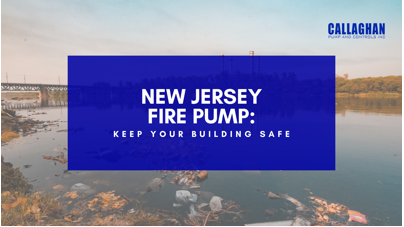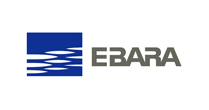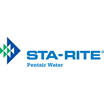
April 14th, 2023
We hope you will never have to use the fire protection system in your building to control a fire. However, if you have to, it’s best to have a system that works properly. This includes checking your sprinklers, inspecting your pipelines, and installing a New Jersey fire pump.
That being said, we are going to throw some light on the causes of fire safety malfunctions that are common in larger facilities. Please have a look:
Here at Callaghan Pump, we supply NJ fire pumps for sprinkler systems in commercial and residential buildings. Here’s what we would suggest when it comes to ensuring fire safety.
First and foremost, your building needs to have a clear plan for fire prevention and evacuation. For that, you will need to follow some legal requirements and practical recommendations that may vary depending on what sort of establishment it is.
or specific recommendations, NFPA 20 has a list of fire prevention guidelines that will help you prevent potential fire dangers. Also, some fire protection requirements are universal. For instance, workplaces should have two clearly unobstructed emergency exits in the form of doors or windows.
Your building’s size and type will determine the requirements for NJ fire pumps, fire protection systems, and extinguishers. Generally speaking, you will need one fire extinguisher for every 3,000 sq. feet.
Also, there are other kinds of fire safety systems and pumps for different types of settings. For instance, if it’s a commercial setting, you will need a commercial fire sprinkler system along with New Jersey fire pump.
Scheduling inspections is a must. You can schedule them with a fire protection service that you can trust. Based on the standards set by the NFPA 20, you should periodically check sprinkler and pump performance that has to be tested. While some aspects of fire protection must be tested weekly, others can go up to five years without an inspection.
Quarterly and annual inspections require you to look at the valves to ensure that they’re sealed and free of damage. Also, you will need to test the condition of sprinkler gauges and relief valves. Then check the fire department connections and the status of the supervisory alarm devices.
A lack of building plans to guide rescue agencies can be a hazard. So, it is imperative to make multiple copies of your building plan available, especially during a fire emergency. You should ask the local fire brigade to assess its safety. For a nominal fee, they will assess your building’s level of fire safety.
Also, consider the storage of hazardous or inflammable materials. Unstable structures, inadequate escape routes, and electricity overloads are potential hazards that should be assessed by professionals.
Every building has an occupancy rating, which determines the number of people that can be inside at one time. It also defines how the space can be used. Complying with this rating and such rules is critical to proper fire safety. In addition to that, the occupancy rating also delineates the types of fire protection legally required for your building.
Callaghan Pump is a leading distributor of New Jersey fire pumps that are available in vertical, turbine, horizontal, inline, and packaged fire pump designs. These pumps are suitable for commercial, residential, and industrial applications and come with key features like NFPA-20-approved designs, diesel or electric driven pumps, pressure sensing lines, and automatic casings.
To select the right NJ fire pump for your space, contact us today.
john@callaghanpump.com,
eileen@callaghanpump.com,
dan@callaghanpump.com,
sales@callaghanpump.com,
service@callaghanpump.com












